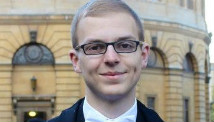NEWTOWN, Conn. The children at the Sandy Hook Elementary school won't be returning to classes for another week, but officials from the town, school district and local agencies are doing their best in the meantime to keep them occupied following a massacre at their school two weeks ago.
The students have not attended school since a gunman killed 20 of their schoolmates and six adults on Dec. 14. They are slated to return to a different school next Thursday.
In the meantime, they've been treated to field trips, toy giveaways and some organized play time.
"A couple of the teachers have done pizza parties," said Janet Robinson, Newtown's school superintendent. "Another met her kids at the library so they could have a little reading time together. The most important thing has been connecting the students back to their teacher and their classmates."

Newtown schools superintendent: We have to move forward

Victims of Conn. school shooting

Newtown police get a break on Christmas
The Newtown Youth Academy, a nonprofit sports center, opened its doors to all kids in town at no cost shortly after the shooting. But from 9 a.m. to 2 p.m. last week, the building's turf field, basketball and tennis courts, and giant inflatable obstacle course were reserved just for Sandy Hook Elementary students.
There have been arts and crafts for the smaller kids, as well as face-paintings. Some celebrities, including two members of the Harlem Globetrotters and former University of Connecticut basketball star Tina Charles, also have stopped by to play with the children.
UConn's men's basketball team and its coaches made a trip to the academy Thursday and played games with the kids, posed for photos and signed autographs. "It was great for us to be able to see some smiles on their faces and to spend some time with them," Coach Kevin Ollie said.
On Thursday afternoon, school buses were loading up at the Youth Academy for a trip to Stamford and a larger complex, Chelsea Piers, which also has ice rinks and an indoor swimming pool, said academy owner Peter D'Amico. Sports celebrities, such as Brooklyn Nets forward Kris Humphries, planned to meet them there.
"The idea was to get them away from the house, the television and all the coverage of this tragedy and get them to a place where kids can just be kids," said D'Amico, a longtime youth coach in town.
University of Connecticut psychologist Julian Ford, who spent time counseling in Newtown in the first days after the shooting, said it's important for the grieving process to include an outlet that lets children know that while things will never be the same, it's OK to enjoy life.
"They are all going to be thinking about what happened," he said. "That, unfortunately, is inescapable. But this gives them a chance to say, `Life is carrying on.' Nothing will be the same, but it's also continuing in ways that it should be."
Some students and their parents on Thursday toured the Chalk Hill school in Monroe, a former middle school being reopened next week for the Sandy Hook students. An open house is planned for Wednesday.
"Getting back into the school is like getting back on the horse," Robinson said. "Some of the scariness is gone once they cross that threshold. They are just so happy to see their teachers."
State police said they plan to keep their contact with the children to a minimum as they continue investigating the shooting.
"We certainly don't want to traumatize them any more than they've already been traumatized," said Lt. J. Paul Vance, the department's spokesman. "If (an interview is) not necessary it won't be done. Our investigators will make all those determinations."
In the meantime, Ford has encouraged parents to keep the kids involved in a normal holiday routine and deal with the tragedy as it comes up, rather than making it a focal point of their lives.
David Connors, who has 8-year-old triplets who attend Sandy Hook, said he and his wife have made play dates with their friends, brought the kids to see family for the holidays and participated in the class get-togethers and recreation events.
"That's been, I think, helpful at least in the short term just to kind of keep them doing things, keep them seeing their friends and being nearby and talking to family," Connors said.
Todd Wood of Newtown has five children, the youngest age 4 and the oldest in college. His children's piano teacher lost a child in the shooting, and the family knows other victims as well.
He said he's found that each child has reacted differently to the tragedy. He said he is not making the shooting the center of his family's life but is not pretending it didn't happen, either.
"We did Christmas, we had our lights here, we've tried to make things as normal as possible," he said. "But we also went down to see the memorials. I don't want to shield them from it. I want to let them grieve in their own way."
Ford said that is healthy. He said children will remember their friends as they go about doing normal kid things.
Chris Wolcott, the sport's academy's operations manager, said the best part of having the kids at the center is that the tragedy is pushed aside, at least for a little while.
"A couple times someone would drop a weight (in the facility's health center) and you would hear a bang and there would be a kid who would freeze for a second," he said. "But that would last a split-second. Most of the time, everyone just had a great time."














